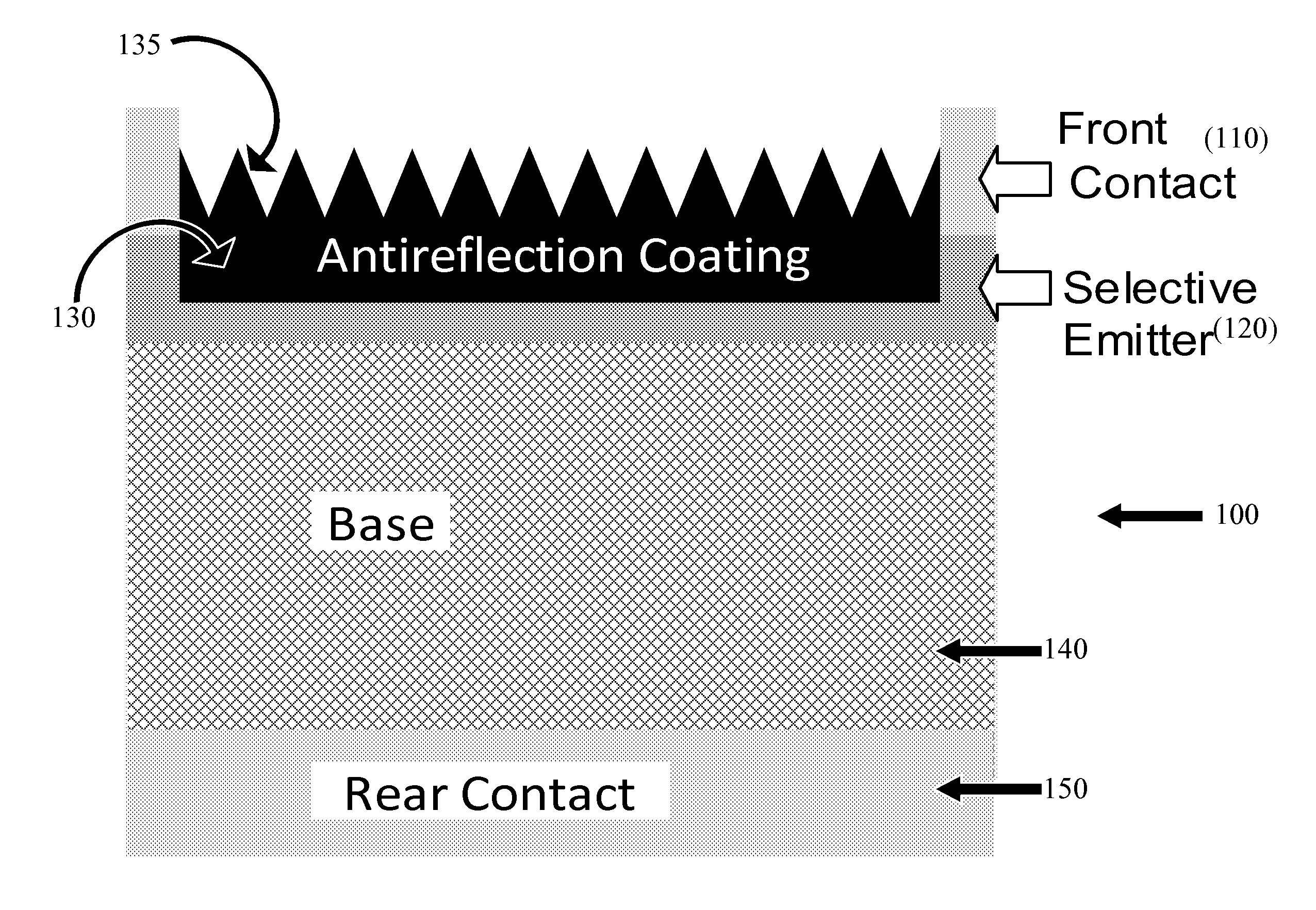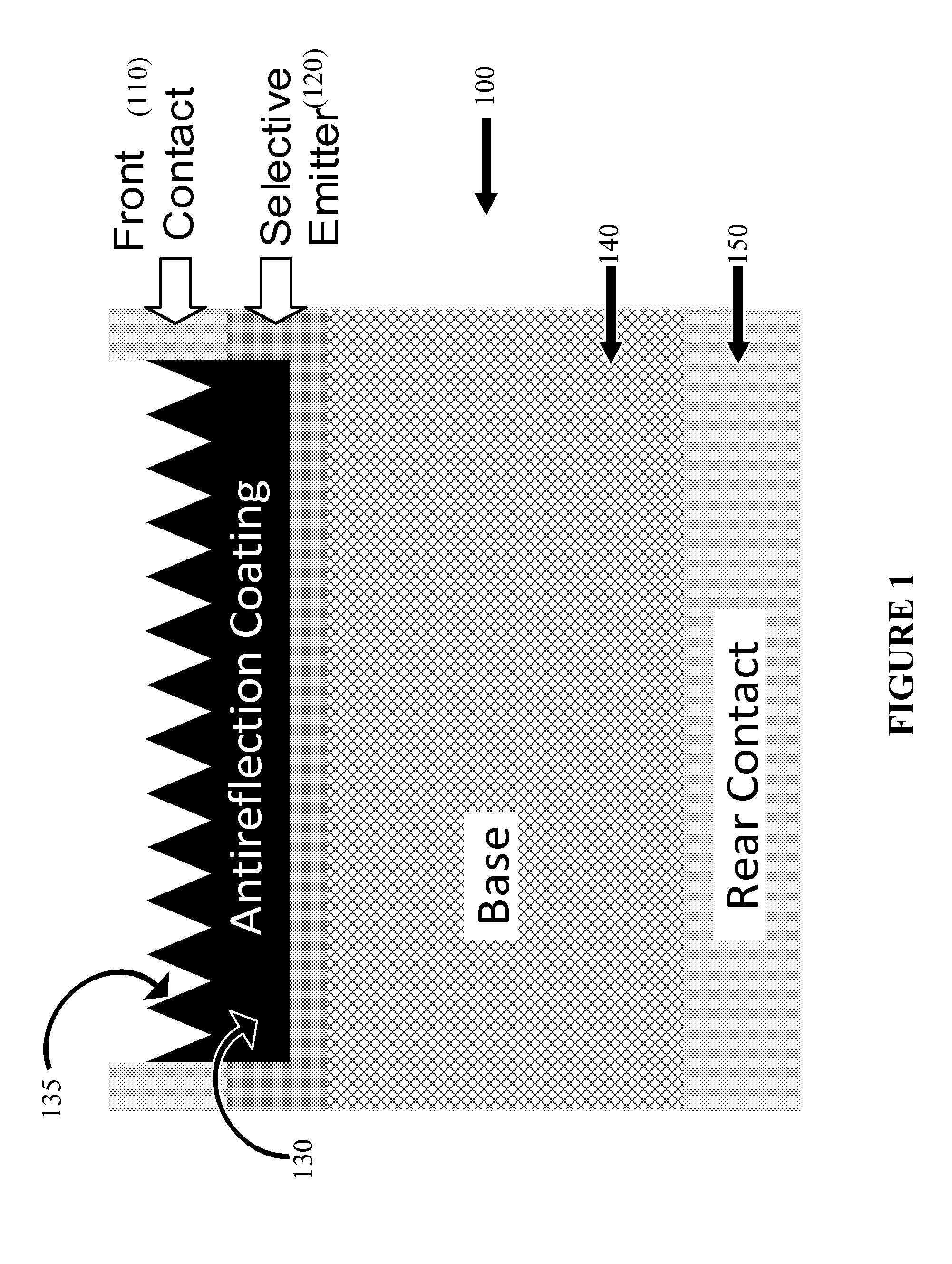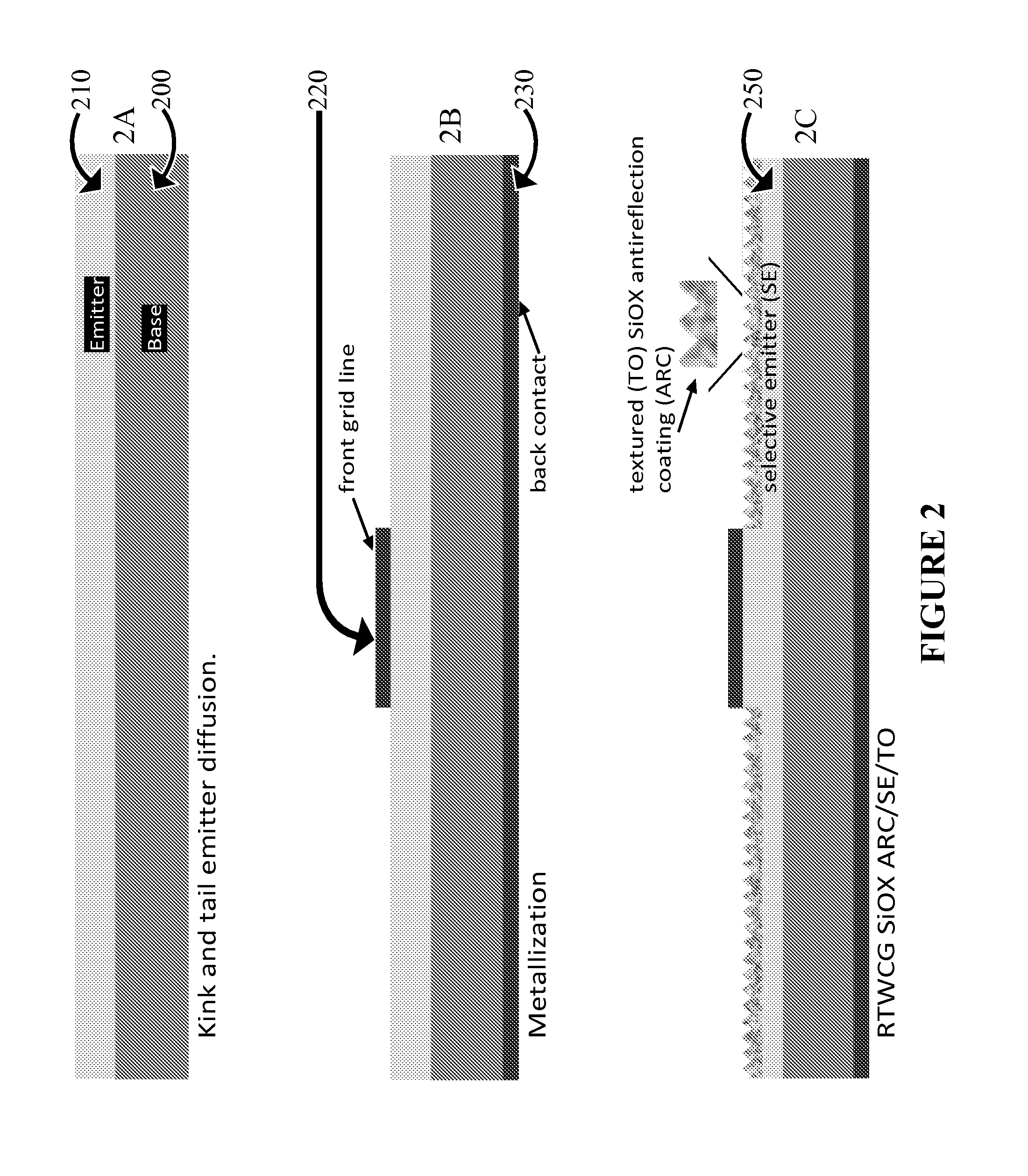Methods, process and fabrication technology for high-efficiency low-cost crystalline silicon solar cells
a crystalline silicon, low-cost technology, applied in the direction of chemistry apparatus and processes, final product manufacturing, basic electric elements, etc., can solve the problems of limiting the application of anodic oxidation as a replacement, the incompatibility of anodic oxidation with metallization schemes, and the inability to meet the requirements of metallization, etc., to achieve adequate resistivity, high efficiency, and high transparency
- Summary
- Abstract
- Description
- Claims
- Application Information
AI Technical Summary
Benefits of technology
Problems solved by technology
Method used
Image
Examples
example 1
Ultra-Low Cost RTWCG SiOX Solution
[0322]Ultra-low cost RTWCG SiOx aqueous solution formulations using diluted chemistries are preferably produced on site at the fabrication facility. This not only significantly reduces the cost of H2SiF6, H2TiF6, and other solution components but will maximize the manufacturer's quality control.
[0323]In a preferred embodiment of the invention, the RTWCG SiOx growth solution formulation eliminates the need for a silicon source, such as H2SiF6 or any other silicon source found in the prior art RTWCG SiOX growth solution formulations. ACS grade, or higher grade, HF(conc) and ultra-high purity water can be used to dilute the concentrated HF solution to the desired 10% to 40% concentration. ACS or better grade HCl(conc) also can be used and diluted to desired concentrations. The RTWCG SiOX growth solution also includes non-invasive aqueous components to which small amounts, 1-10 g per 1 L HF(aq), of a single preferred catalyst or a combination of preferr...
example 2
In Situ Surface Cleaning and Compatibility with Screen Printing Metallization
[0325]All experimental small area high efficiency cells are fabricated in clean room facilities, yet most of the current state-of-the-art solar cell manufacturing is conducted in non-clean room environments. Non-clean room environments negatively affect the efficiency of cells by introducing impurities on the cell surface. The RTWCG SiOx ARC / SE process, being the last fabrication step, recaptures the efficiency that is lost due to non clean room environments by cleaning the active surfaces and screen printed front grid lines. Moreover, as can be seen in the examples of realization below, the in situ cleaning lowers the efficiency dispersion within the same batch as well as between batches.
[0326]FIG. 21(a) shows the Nomarski view a c-Si solar cell with a pyramid-textured front surface which had a high peak-to-valley aspect ratio of 25 μm. As can be seen in FIG. 21(b), the RTWCG SiOx process is fully compatib...
example 3
RTWCG SiOx ARC
[0334]The efficiency of a solar cell is in large measure determined by its reflectance, and hence, its ability to retain rather than reflect solar energy back into space. Many solar cell manufacturers still use titanium dioxide (TiOx) as a single layer antireflection coating (SLARC), which is usually spray coated onto the cells, then baked in order to eliminate the solvents. The main drawback of the relatively low cost TiOx ARC is the fact that it has a relatively large, ˜15%, AM 1.5 AWR. Additionally, TiOx films cover the front surface metallization, requiring it to be removed from the front bus bars to allow for cell interconnection into lines during solar modules fabrication.
[0335]Silicon Nitrate (SiNx) ARCs are a better approach since their AM1.5 AWR is ˜12%. SiNx is deposited by chemical vapor deposition (CVD), or plasma enhanced CVD (PECVD) at relatively low temperatures in air or vacuum. SiNx deposition is rather expensive from a process, maintenance, and especi...
PUM
| Property | Measurement | Unit |
|---|---|---|
| thickness | aaaaa | aaaaa |
| temperatures | aaaaa | aaaaa |
| temperatures | aaaaa | aaaaa |
Abstract
Description
Claims
Application Information
 Login to View More
Login to View More - R&D
- Intellectual Property
- Life Sciences
- Materials
- Tech Scout
- Unparalleled Data Quality
- Higher Quality Content
- 60% Fewer Hallucinations
Browse by: Latest US Patents, China's latest patents, Technical Efficacy Thesaurus, Application Domain, Technology Topic, Popular Technical Reports.
© 2025 PatSnap. All rights reserved.Legal|Privacy policy|Modern Slavery Act Transparency Statement|Sitemap|About US| Contact US: help@patsnap.com



